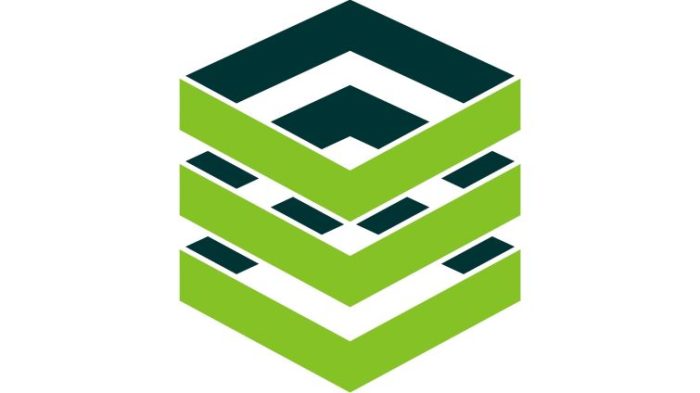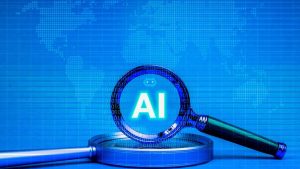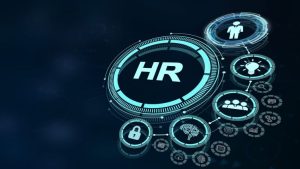HR Tech Stack: 7 Steps for Building Your Technology Roster
 Publié le 21 September 2023
Publié le 21 September 2023
Build a strong HR tech stack and utilize 7 steps for building your technology roster in order to help your business achieve continued success.
Managing a workforce requires an effective tech stack filled with solutions that benefit your business, particularly in today’s increasingly remote workplace, where employees can be scattered across the globe.
But with the vast amount of offerings available – from automated administrative tools to screen sharing software – it can be difficult for HR teams to know where to start when they embark on a comprehensive tech refresh.
In this article, we’ll go through the benefits of an HR tech stack and the 7 steps for building your technology roster.
What Is an HR Tech Stack?
An HR tech stack might sound technically complicated, but it’s actually quite simple.
The expression “tech stack” is simply a fancy way of referring to a collection of technological tools that automate someone’s job. This can range from hardware like servers to software like an iPad remote control.
Any technology that human resources use to do their job is part of their tech stack.
How Does HR Technology Benefit Your Business?
A recent study by the HR Research Institute pinpointed some of the key roles of HR technology.
Image sourced from hr.com
HR is responsible for all of these processes, as well as being responsible for dozens, hundreds, or even thousands of employees. This means HR requires comprehensive solutions to complex problems.
Having a complete HR tech stack can automate a lot of manual procedures, verify and secure records, schedule tasks, analyze data, facilitate communication, and so much more.
Automating these processes cuts out a lot of busy work in an HR representative’s day, leaving them time to focus on more important tasks, boosting their engagement in the process. This leads to better standardization, security, and reliability, leaving fewer mistakes to deal with.
More available time and fewer mistakes mean a better working environment for everyone.
7 Steps For Building Your HR Technology Roster
1. Figure out what tools you need
First, define your criteria for a successful HR tech stack.
Free to use image sourced from Pixabay
What tools do you need? While this will vary from business to business, an HR tech stack should always include a few basics:
- The ability to store and analyze employee and company data
- Good security
- Solutions that can scale with your business
- Solid integration with your other business tools and processes
- The right HR tools for your business, which we’ll discuss in more detail throughout this article.
There are so many solutions out there that it can be overwhelming. Consider your specific needs and research HR tech trends before jumping in.
It’s vital to create a strategy before building your HR tech roster. You don’t want to spend a lot of time and money through trial and error.
2. Consider HRIS and HCM solutions
That’s a lot of acronyms, so let’s break them down.
HRIS–Human Resource Information System
This is a centralized database that contains all of your HR data. Everything from policies to attendance to payroll can be stored on an HRIS, creating a comprehensive and secure database of important HR information.
HRIS can improve your record keeping, standardize information across departments, keep employee and company data secure, and help with data analytics.
HCM–Human Capital Management
HCM is a more comprehensive solution to HR management. Where HRIS is predominantly a database, HCM includes a wider toolset for HR management.
HCM systems often incorporate things like communication channels, recruitment tools, personal assistants, and even artificial intelligence.
The type of management system you choose will depend on your business and budget. The more comprehensive the system, the more expensive it is, so consider what you need carefully.
3. In-house, perpetual license, or SaaS?
Do you want an in-house solution to your HR technology needs? Or do you intend to use third-party software?
Free to use image sourced from Pexels
In-house
If you choose to develop an entirely in-house solution, you’ll need a talented development team who also understands the tools that human resource management requires. This path has the advantage of creating tools that are specific to your organizational needs.The disadvantage is that it will likely require significant time and financial resources to develop these tools properly.
If you choose third-party software, there are a couple of different options.
Perpetual license
By choosing this option, you pay for the software upfront and host it on your own hardware. For small businesses, this can mean a good amount of hard drive space. For large businesses, this can mean hosting servers to store and process large amounts of data.
Because of this, perpetual license solutions can have a high upfront cost. On the other hand, though, they require no ongoing subscriptions, which means they can be more cost-effective in the long run – a one-off cost of $500 to $100,000 per employee depending on the size of your business.
These solutions can also be more secure, since you’re hosting the data on-site and not relying on cloud services that might be at risk of leaks or cyber-attacks.
Some perpetual license solutions do offer a subscription to ongoing updates and maintenance. Without this, all updating and maintenance will need to be conducted in-house.
SaaS
Software as a service (SaaS) is a software subscription model that allows you to make ongoing payments to the developer. In return, you benefit from the ongoing development of the technology.
SaaS models require little upfront cost, but the subscription charges can be high – anywhere from $3 to $3,500 per employee, per month. The benefit of SaaS models is that you get ongoing support, maintenance, data hosting, and updates, without having to provide the hardware or tech support yourself.
Some SaaS solutions are more secure than others, so do some research before picking the cheapest option. Look for recommendations and testimonials from people in your industry, or use a product-led approach and let your HR team try multiple solutions and report which they prefer.
4. Look for scalability
Your HR tech stack should account for changes in your business, whether upscaling or downscaling.
For example, if you’re planning for business growth, you might want to avoid buying a perpetual license software that can only handle a dozen employees. In this instance, an SaaS solution might be better, since they are infinitely scalable.
5. Build your HR tech stack around integration
You probably already use technology to run your business. You don’t want to end up with an HR tech stack that doesn’t play well with your existing tech.
Plenty of HR tools have masses of integrations, especially SaaS models which develop new integrations all the time. Figure out which business processes you need to integrate with your HR solutions and build your HR tech stack around that. It’s a good starting point.
6. Make sure your tech stack allows remote access
The COVID-19 pandemic left a lot of HR departments struggling to manage a remote workforce. Now, 12.7% of employees work fully remotely and 28.2% of employees work a hybrid remote model. Remote work is rapidly becoming an expected part of our culture.
An HR department’s job is to manage people. HR needs a way to track attendance, productivity, complaints, shifts, and employee relations even when employees are working from home. Any HR tech tools you consider should work remotely.
HR tech that allows remote workforce management has the added benefit of broadening the talent pool. If you can hire employees from anywhere in the world, your options just got a lot more interesting.
7. Fill your tech stack with the right tools
As we mentioned before, an effective HR tech stack is unique to each business, but there are some core functions you should look for.
Recruitment and onboarding
Businesses get mountains of resumes during the hiring process, and an effective HR tech stack should contain ways of automating candidate assessment.
Free to use image sourced from Pixabay
Using candidate management software to quickly filter out applicants without the right qualifications or experience can drastically lessen the time it takes between posting a job and interviewing prospects.
Once a perfect candidate is found, employee onboarding should be consistent and repeatable to make sure all new employees get the same instruction. Automated onboarding tools standardize the onboarding process.
Diversity
Inclusion tools help keep your workforce a more equitable place. They also help with diversity hiring goals by removing personal information like age, gender, and photos from resumes to avoid personal biases affecting recruitment.
Payroll and benefits
Payroll is an area where HR cannot make mistakes. All employees are entitled by law to receive their contracted pay, and any errors in the payroll system can both destroy employee trust in the company and put the company at legal risk.
The same goes for benefits, if your company offers them. These, too, need to be tracked, organized, and delivered to the right employees.
Automated payroll and benefits systems eliminate human error and are an essential part of any comprehensive HR tech stack.
Communications
HR teams have to communicate with everyone, including job candidates, employees, management, and other HR staff.
Choose HR solutions like a cloud based PBX for small business that contains integrated unified communications services. These allow your HR team to email, call, instant message, video conference, and text all from one place. This keeps all communication secure and recorded for future reference.
If HR has to deal with a troublesome employee, for example, it’s always good to have all communication on the record.
Analytics
A major component of HR is employee relations, and analytic tools can monitor the entire employee experience – from job satisfaction to pay satisfaction, from complaints to productivity. Analyzing data helps both the business and its employees by locating problems and offering workable solutions.
Security
HR teams regularly deal with a lot of sensitive information, like detailed employee records containing personal and financial data. Whichever HR tech solutions you choose, look for up-to-date security certificates from reputable regulatory agencies.
Conclusion
Using a successful HR tech stack and 7 steps for building your technology roster can improve how your HR team functions.
HR technology can standardize processes and automate menial tasks, cutting down on human error. As a result, your HR team has more time to be hands-on with employees, building better employee relationships, increasing productivity, and overall improving every aspect of your business.







